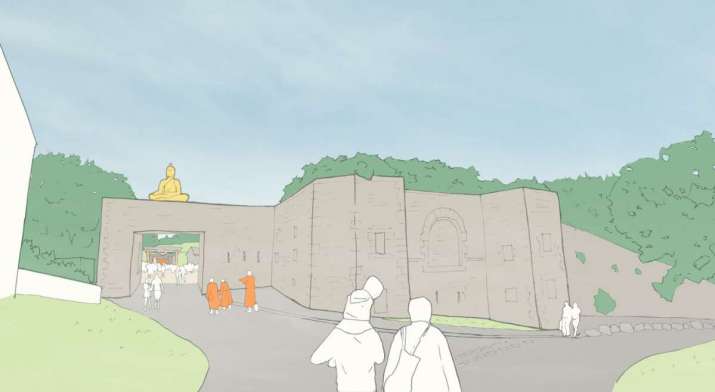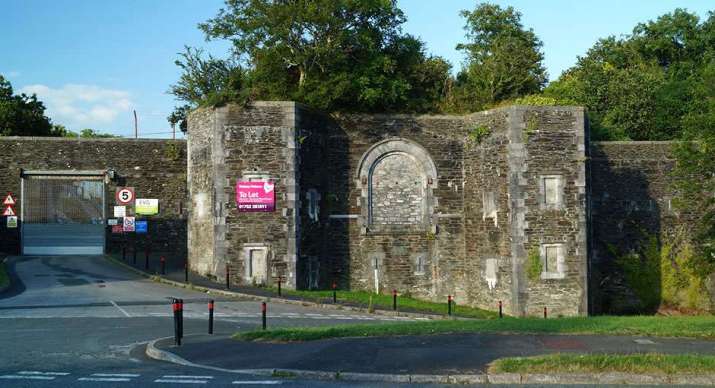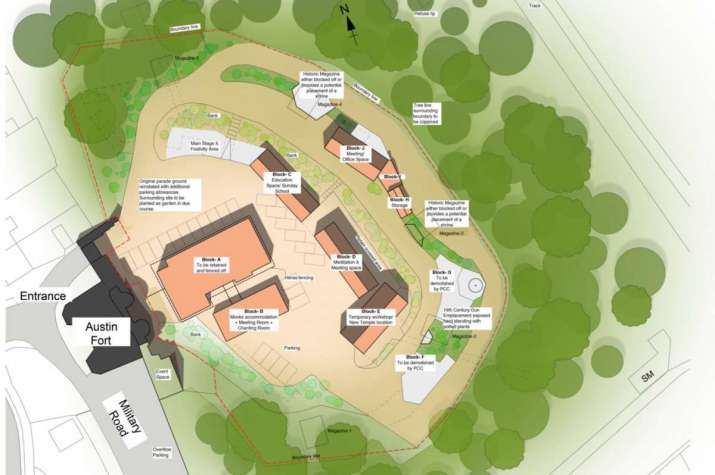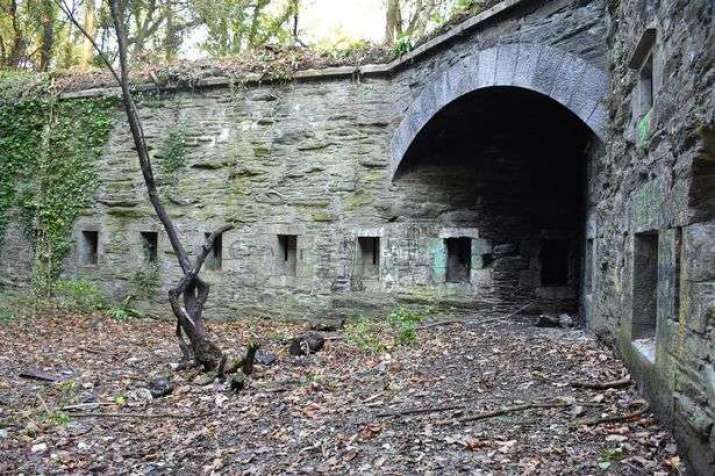NEWS
Plan to Reincarnate 19th Century British Fort as Buddhist Temple Receives Green Light
 Depiction of the renovated site. From lepagearchitects.com
Depiction of the renovated site. From lepagearchitects.comPlans to transform a crumbling 19th century fort in the English coastal city of Plymouth into a Buddhist temple look set to go ahead after the city council approved a planning application for the proposed project on Friday. The proposed site will feature accommodation for five or more monks, a chanting room, with plans to eventually build a traditional Thai Temple inside the complex.
In March 2017, the Thai British Buddhist Trust and the Thai Buddhist Community of Plymouth, representing Wat Mahathat UK, hired Le Page Architects to design a new Buddhist center in the city. Le Page submitted a planning application to Plymouth City Council to turn the site into a place of worship in April last year,* and conditional approval was given on 12 June this year.
Fort Austin is a Scheduled Ancient Monument (SAM) under the Ancient Monuments and Archaeological Areas Act 1979, with structures considered to be of national importance. The planned project is intended as a new religious base in southwest England for Wat Mahathat, the Staffordshire-based British branch of Wat Mahathat Yuwaratrangsarit, a royal Buddhist monastery in Bangkok.
 Austin Fort, Plymouth. From castlesfortsbattles.co.uk
Austin Fort, Plymouth. From castlesfortsbattles.co.uk“The Thai community in Plymouth and the southwest currently use small rented premises in Plymouth. The building is not large enough for the numbers who attend and is located in a residential area with no dedicated parking, which is problematic,” according to the planning application filed with the city council. “The works proposed are to facilitate a change of use on the site to accommodate limited residential and religious use of the site. The works will also decrease the risk of anti-social behavior for local residents around the fort, and reduce the risk of damage to the historic fabric and archaeological stratigraphy of the monument.” (Plymouth City Council)
Local police reported that the unused fort had become a gathering point for young people, and that evidence of illicit drug use had been found at the site. The city council has expressed hope that the planned temple will discourage antisocial behavior in the area and avert further damage to the historic building.
“It’s not really the fact that they’re causing antisocial behavior for others because it’s so remote people aren’t going to know it,” a local police officer explained. “But if something goes wrong for the kids when they’re in these tunnels, or if they’re in a den in the middle of the woods, it’s going to be very difficult for anyone to know what’s going on or where they are or to get to them in a hurry if they need to.” (Plymouth Live)
 The proposed redevelopment of the historic site. From lepagearchitects.com
The proposed redevelopment of the historic site. From lepagearchitects.comThe planning application also states: “The monks have to be given their lunch by midday. A social event will follow and generally the Thai community will leave by 3pm, unless they decide to stay and help the monks. . . . There will be four large events each year: in April, the Thai New Year with approximately 100 attendees, in May: the celebration of Visual Puja Day with approximately 60–80 attendees, in August: the celebration of [the] Thai Queen’s Birthday and Thai Nation Mother’s Day [sic] with approximately 60–80 attendees and in October: Khatina Robe Ceremony for monks with approximately 60–80 attendees.
“As well as the four largest events of the year as outlined above, there could be some smaller events such as chanting or meditation classes. These will be open to the whole community. The monks will also be offering bereavement counseling (subject to English-speaking monks being available).”
Fort Austin, in the Plymouth suburb of Eggbuckland, is a 19th century fort and battery, construction which was undertaken from about 1863 amid fears of an invasion from France. Completed shortly after 1868, the structure was designed to accommodate 15 guns and five mortars, with five earth traverses containing magazines. The site has two vaulted chambers, intended to house 32-pounder guns, connected via tunnels. The site was still in use during World War II, and in 1958, the fort was handed over to Plymouth City Council by the Ministry of Defence. In 1984, the guardhouse was converted to the Plymouth City Emergency Centre for Civil Defence, which was eventually vacated in April 2017.
 Austin Fort. Photo by Joe Hocking. From cornwalllive.com
Austin Fort. Photo by Joe Hocking. From cornwalllive.com* Plans afoot to Transform 19th Century British Fort into Buddhist Temple (Buddhistdoor Global)
See more
Impressive Buddhist temple at troublesome 'drugs den' fort is about to be built (Plymouth Live)
The dangerous Plymouth tunnels youths were taking drugs in (Plymouth Live)
Planning – Planning Application Documents (Plymouth City Council)
Fort Austin, Plymouth (Le Page Architects)
Wat Mahathat UK (Thai British Buddhist Trust)
Related news from Buddhistdoor Global
Forty-meter Buddha Statue Planned in Spain
Buddhist Written Heritage to be Discussed at British Library Conference
Police in England and Wales Take Up Buddhist-inspired Meditation
British Library Exhibition Explores the Roots and Relevance of Buddhism
Extinction Rebellion Buddhists Face off with Authorities in London














